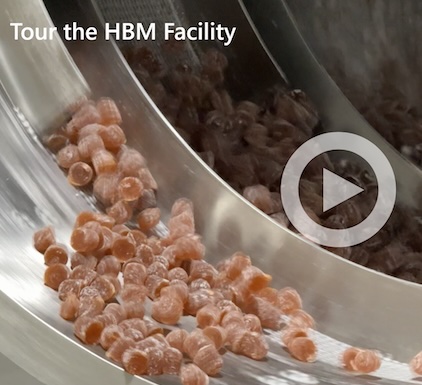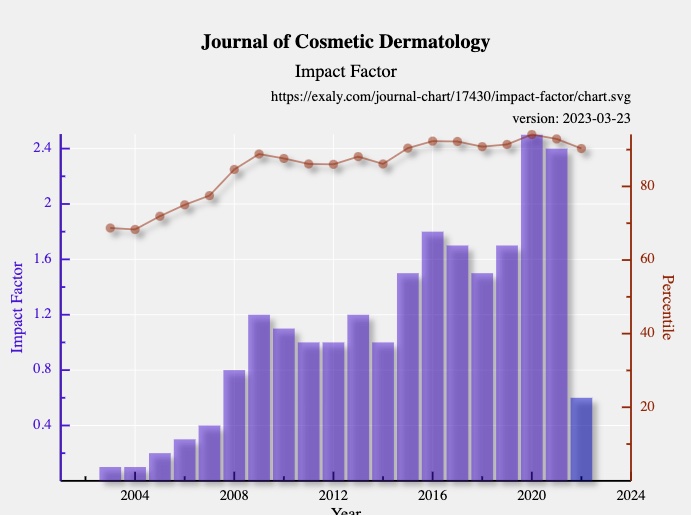Abstract
Functional gummies are everywhere—from sleep and stress relief to gut health and beauty—but the path from product idea to shelf-ready gummy is rarely as sweet as it seems. While gummies are trending for their convenience and taste, few brands understand the scientific, technical, and manufacturing hurdles that come with delivering real efficacy in a candy-like format. This report unpacks the hidden complexity behind making a functional gummy work: from ingredient compatibility and gelling systems to manufacturing timing and stability testing. At HBM, we’ve developed custom gummy formulations for a wide range of health and beauty applications. Drawing on that experience, we outline why so many concepts fall apart during scale-up—and how to build a better gummy from the start.
Executive Summary
- Functional gummies often fail not at the formulation stage, but during scale-up and manufacturing.
- Heat-sensitive ingredients, incompatible textures, and pH limitations can destroy efficacy if not properly accounted for.
- Taste masking, texture, and active performance must be optimized together—this requires precise sequencing.
- Pilot batching is not optional—it’s the only way to ensure your formula behaves on real equipment.
- The path to a great gummy is more like pharmaceutical development than candy making.
Introduction: The Gummy Gold Rush
Functional gummies have moved from novelty to necessity. Once seen as a playful alternative to capsules and powders, they are now at the center of the wellness world. Consumers love them for their ease and taste. Retailers love them for high sell-through and margin. And brands love them—until they try to launch one.
What most brand teams don’t realize is that functional gummies are a category where chemistry, food science, and high-precision manufacturing intersect. It’s not just about making a gummy taste good or include an active ingredient—it’s about making sure the final product delivers that ingredient in a stable, palatable, and compliant way over time.
Ingredient Compatibility & Stability
One of the biggest challenges in gummy formulation is that not all ingredients play nicely with others—or with the process itself.
Heat-sensitive actives like vitamin C, L-theanine, or coenzyme Q10 often degrade during the cooking process unless they are added post-cook, which limits your window for mixing and dispersion. Meanwhile, minerals like magnesium or calcium can disrupt gelling behavior, particularly with pectin, leading to textural failures or ingredient clumping.
Other ingredients have pH requirements that fall outside of the ideal gummy range (3.2 to 3.6), which can result in instability or reduced shelf life. Natural flavors and colorants may further complicate things, especially if they introduce moisture or acidity at the wrong time.
If a product’s active degrades or separates before it reaches the customer, it doesn’t matter how good the label looks—it won’t perform.
Flavor, Color, and Texture Tradeoffs
Taste is often the hook that brings consumers to gummies—but it’s also the first place things go wrong.
Many functional actives have strong or unpleasant flavors (think turmeric, B vitamins, or adaptogens). Overcoming these flavors without synthetic masking agents is difficult, especially when working within a natural or clean-label framework. You may need high flavor loads, additional acids, or sweetness balancing—each of which can interfere with gelling, moisture retention, or color stability.
Choosing a gelling system matters, too. Pectin (which is vegan and increasingly popular) offers a bright, clean bite but requires precise temperature and pH control. Gelatin, while easier to use in some cases, is less stable under heat and humidity and isn’t plant-based. These systems affect not just feel and mouth experience, but consumer perception, storage conditions, and scalability.
Manufacturing Constraints Most Brands Overlook
Making a gummy isn’t like baking—it’s like engineering. Small timing and sequencing differences can make or break your product.
For example:
- Adding heat-sensitive ingredients too early can render them useless.
- Incorrect holding tank temperatures can cause the gummy mix to firm too quickly or unevenly.
- Mixing speed and injection timing must match the viscosity of the formulation—or you’ll get uneven fill or texture problems.
- Even things like ambient humidity and conveyor cooling rates affect the final product.
These are not hypothetical concerns. We’ve seen well-formulated products fail simply because the pilot batch wasn’t optimized for full-scale equipment—or because a crucial heat-sensitive ingredient wasn’t properly integrated at the right phase.
Testing & Validation: The Pilot Batch is Non-Negotiable
Before going into production, a pilot batch is your product’s stress test.
It allows you to:
- Validate texture, moisture, active potency, and appearance
- Adjust timing and mixing to suit your specific ingredients
- Catch problems with flavor loss, discoloration, or gelling inconsistencies
- Test for scale-up compatibility (what works in a beaker often fails in a 300kg cooker)
Most importantly, pilot testing helps you define the Manufacturing Specification Sheet (MSS) that ensures each run hits the same benchmarks. Without this, you risk inconsistent batches, failed shelf-life testing, and costly reformulations.
Strategic Takeaways for Brands
If you’re developing a functional gummy product:
- Don’t choose actives based solely on trendiness. Ask: does this ingredient work in a gummy matrix?
- Start formulation with the delivery system in mind, not just marketing claims.
- Budget time and money for pilot runs—it’s the best investment you can make for launch success.
- Partner with a manufacturer early, not after your product is “done.” It will save you months and money.
Case Studies from the Field
Brand A selected a 250mg turmeric dose with natural flavoring. The result? Persistent bitterness, even with masking agents. We reformulated with a lower odor extract and paired it with mango-pineapple flavor for balance.
Brand B tried to switch from gelatin to pectin without adjusting water activity. The result? Gummy collapse at shelf. After testing, we revised the gelling ratio and acid profile to stabilize the product.
Brand C created a beautiful lab formulation with iron and B vitamins, but the iron clumped during scale-up and ruined the molds. A pilot run exposed the issue and led to encapsulation of the mineral to allow even dispersion.

HBM’s Perspective
At HBM, we’ve seen time and again how functional gummies fail not because the idea is bad—but because the execution didn’t account for the science. That’s why we’ve built a process that includes in-house R&D, pilot batching, and scalable production with pectin-based and sugar-free options.
Our team knows how to navigate the complexity of formulation, active timing, texture, and taste—all under real-world manufacturing conditions. Whether you’re launching a single-SKU sleep aid or a multi-stage wellness blend, our systems are built to help you formulate with confidence and manufacture with precision.
“What looks great on paper can break down in the cooker or fall apart after 30 days on the shelf. Our multi-stage integration process—starting with small-batch pilot testing—ensures your product performs as intended. That’s the difference between a product launch and a product return.”
About HBM
HBM is a contract manufacturer specializing in custom health and beauty products. Our gummy production capabilities include both sugar and sugar-free pectin-based systems, complex multi-active formulations, and pilot-to-scale production. We’re FDA-registered, GMP-certified, and carry $2M+ in product liability coverage. Our mission is to bring high-performance, science-backed products to life for modern wellness brands.
Visit HBMNutra.com to learn more or schedule a consultation.








